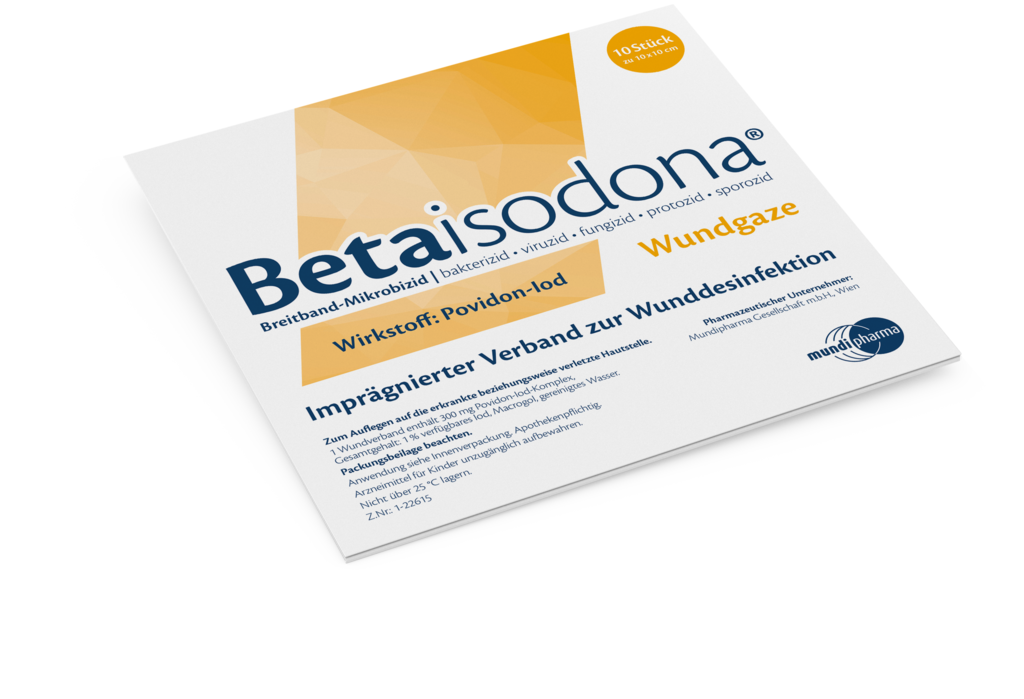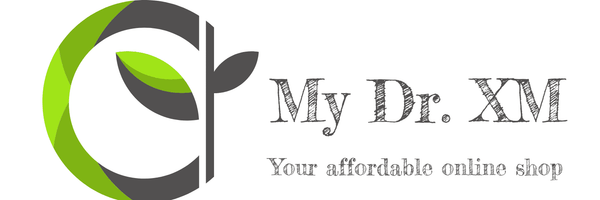Mundipharma
Betaisodona wound gauze 10x10 cm 10 pcs
Betaisodona wound gauze 10x10 cm 10 pcs
Couldn't load pickup availability
Betaisodona wound gauze is a germicidal medicine (antiseptic) for use on skin and wounds. Povidone-iodine has a comprehensive germicidal effect. It is effective against bacteria, fungi, spores, viruses and protozoa.
Reliable disinfection largely prevents infections and promotes rapid, problem-free healing.
There is no need to fear that infectious pathogens will develop resistance (resistance) to povidone-iodine due to its mode of action.
By binding to povidone, the iodine largely loses the irritating properties of alcoholic iodine preparations and is well tolerated by skin, mucous membranes and wounds.
field of use
Betaisodona wound gauze is used for a limited time as a germicidal dressing for:
- Prevention of skin infections with a high probability of infection,
- treatment of skin infections,
- anti-infection treatment of cuts and abrasions as well as other injuries,
- Anti-infective treatment for skin burns, bed sores, pressure sores and infected lower leg ulcers (decubitus, leg ulcers).
If you don't feel better after a few days or even feel worse, contact your doctor.
Contraindications
Betaisodona wound gauze must NOT be used
- if you are allergic to povidone-iodine or any of the other ingredients of this medicine listed in section 6,
- if you suffer from an overactive thyroid (hyperthyroidism) or other thyroid diseases,
- if you suffer from the rare chronic skin inflammation dermatitis herpetiformis Duhring,
- when using preparations containing mercury at the same time,
- before, during and after radio-iodine scintigraphy or radiation therapy of the thyroid with iodine (radio-iodine therapy) until the end of the treatment.
Interactions
Using Betaisodona Wundgaze together with other medicines
Tell your doctor or pharmacist if you are taking/using other medicines, have recently taken/used other medicines or plan to take/use other medicines.
DO NOT use at the same time
- Betaisodona wound gauze and hydrogen peroxide, enzymatic or silver- and taurolidine-containing wound treatment products or disinfectants, as this leads to a mutual weakening of the effect,
- Betaisodona wound gauze and preparations containing mercury, as a corrosive compound (mercury iodide) can form,
- Betaisodona wound gauze and wound treatment products containing octenidine, as dark discoloration can occur temporarily,
- Betaisodona wound gauze and taurolidine, a chemotherapy drug against bacteria and fungi, as taurolidine can be converted into an acid (formic acid) that causes intense burning.
Protein, blood or pus components can impair the effectiveness of Betaisodona wound gauze.
If you are receiving lithium therapy, Betaisodona wound gauze should be used with caution and only for a short time. In this case, larger amounts of iodine can be absorbed through the skin.
Pregnancy, breast-feeding and fertility
If you are pregnant or breast-feeding, think you may be pregnant or are planning to have a baby, ask your doctor or pharmacist for advice before using this medicine.
Use in pregnant women and during breastfeeding may only be carried out following the express instructions of the doctor and to an extremely limited extent; Monitoring thyroid function in the mother or infant is indicated. Treatment should only last for a short time. Iodine enters the fetus (unborn child) via the placenta and is also excreted in breast milk.
Accidental oral ingestion (through the mouth) of Betaisodona by the infant through contact with the treated part of the breastfeeding mother's body must be avoided.
Application
Always use this medicine exactly as described in this leaflet or exactly as your doctor or pharmacist tells you. Check with your doctor or pharmacist if you are unsure.
Dosage and method of use
For use on the skin.
Betaisodona wound gauze is applied every time the dressing is changed. In the initial phase or in heavily infected wounds, the wound gauze can be changed several times a day.
Take Betaisodona wound gauze out of the wrapper, remove the protective film and place the wound gauze directly on the diseased or injured area of skin. You can cut the wound gauze to the size of the wound. You can apply a bandage over the wound gauze. Replace the wound gauze every time you change the dressing. For heavily infected or exuding (secreting) wounds, you can change the wound gauze several times a day.
The brown color of the ointment contained in Betaisodona wound gauze is a property of the preparation and indicates its effectiveness. Increasing discoloration indicates a decrease in the effectiveness of the preparation. If the color is completely discolored, it is no longer effective. If you notice extensive discoloration of the ointment, apply a new gauze.
Do not use Betaisodona wound gauze together with other wound treatment products.
Duration of application
The use of Betaisodona wound gauze should be continued as long as there are still signs of inflammation. If your symptoms have not improved after regular use of Betaisodona wound gauze for several days (2 to 5 days), or if symptoms recur after treatment has been completed, please consult your doctor.
Note
Povidone-iodine can be easily removed from textiles and other materials with warm water and soap, or in stubborn cases with ammonia (ammonia) or fixing salt (sodium thiosulfate solution).
Newborns and infants under 6 months.
For newborns and infants up to 6 months of age, Betaisodona wound gauze should only be used after a strict benefit/risk assessment by the doctor and in an extremely limited manner.
Side effects
Like all medicines, this medicine can cause side effects, although not everyone gets them.
When assessing side effects, the following frequency information is used:
Very common: may affect more than 1 in 10 people treated
Common: may affect up to 1 in 10 people treated
Uncommon: may affect up to 1 in 100 people treated
Rare: may affect up to 1 in 1,000 Affect those treated
Very rare: may affect up to 1 in 10,000 people treated
Not known (frequency cannot be estimated from the available data)
Rare side effects
Hypersensitivity, hypersensitivity reactions of the skin, which can manifest themselves in the form of itching, redness, blisters or similar.
Very rare side effects
acute general allergic reactions (anaphylactic reaction) often accompanied by a drop in blood pressure, dizziness, nausea and possibly shortness of breath, hyperthyroidism in patients who are prone to this (signs: rapid pulse, inner restlessness)1), allergic, painful swelling of the skin and mucous membranes (angioedema )
Side effects with unknown frequency
Hypothyroidism2), Disturbances of the electrolyte balance3), Metabolic acidification of the blood and body3), Acute kidney failure3), Number of dissolved substances in the blood too high or too small3)
- In patients with a history of thyroid dysfunction (see section 2 Special warnings and precautions for use) after ingestion of a large amount of iodine, for example in the course of large-scale use of povidone-iodine in the treatment of wounds and burns over a longer period of time
- Hypothyroidism after long-term or excessive use of povidone-iodine
- May occur after ingestion of a large amount of povidone-iodine (e.g. treatment of burns).
composition
The active ingredient is:
300 mg povidone-iodine complex, total content: 1% available iodine.
The other ingredients are: macrogol, purified water, mesh tulle made of bleached muslin, 100% cotton
Usually ships out within 3-4 business days
Share


